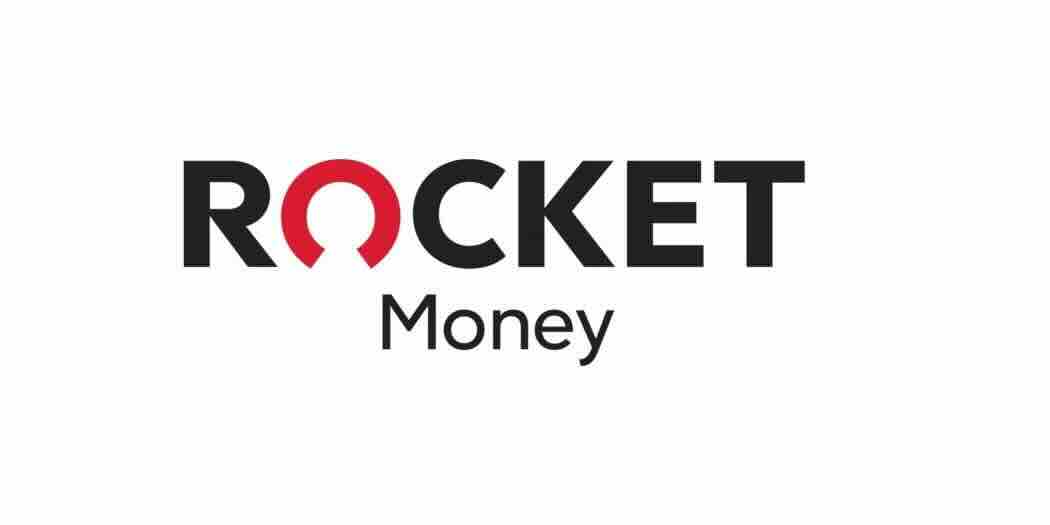Inflation, Deflation, and Stagflation - The impact on the Economy

Inflation, deflation, and stagflation are terms that are often used in discussions about the economy, but what do they actually mean? Understanding these economic phenomena is important because they can have significant impacts on individuals, businesses, and entire countries. In this guide, we'll explore what inflation, deflation, and stagflation are, how they occur, and what their effects can be.
What is inflation and how does it impact the economy?
Inflation is the rate at which the general level of prices for goods and services is rising, and the purchasing power of currency is falling. When inflation occurs, the cost of living increases, and the value of money decreases. This can lead to a decrease in consumer spending, as people are less likely to purchase goods and services when they are more expensive. Inflation can also lead to higher interest rates, as lenders seek to compensate for the decrease in the value of money over time. Overall, inflation can have a negative impact on the economy, as it can lead to decreased economic growth and increased unemployment.
Inflation can be caused by a variety of factors, including an increase in demand for goods and services, a decrease in the supply of goods and services, or an increase in the cost of production. In some cases, inflation can be beneficial for the economy, as it can encourage investment and stimulate economic growth. However, when inflation becomes too high, it can lead to a phenomenon known as stagflation, where economic growth slows down while prices continue to rise. Deflation, on the other hand, is the opposite of inflation, where the general level of prices for goods and services is falling, and the value of money is increasing. While deflation can lead to increased consumer spending in the short term, it can also lead to decreased economic growth and increased unemployment in the long term. Overall, it is important for policymakers to carefully monitor inflation, deflation, and stagflation, and take appropriate measures to ensure a stable and healthy economy.
What is deflation and how does it impact the economy?
Deflation is the opposite of inflation, and occurs when the general level of prices for goods and services is falling, and the purchasing power of currency is increasing. While this may seem like a good thing, as it means that goods and services are becoming more affordable, deflation can actually have negative consequences for the economy. When prices are falling, consumers may delay purchases in the hopes of getting a better deal later on, which can lead to decreased consumer spending and decreased economic growth. Deflation can also lead to increased unemployment, as businesses may be forced to cut costs in order to remain profitable. Overall, deflation can be just as damaging to the economy as inflation.
Deflation can also lead to a vicious cycle, as falling prices can lead to lower profits for businesses, which can in turn lead to decreased investment and further economic contraction. This can be particularly problematic in industries that rely heavily on debt, as deflation can increase the real value of debt, making it more difficult for businesses to repay loans. In extreme cases, deflation can lead to a deflationary spiral, where falling prices lead to decreased demand, which leads to further price decreases, and so on. While deflation is relatively rare in modern economies, it can be a serious concern when it does occur, and policymakers may need to take action to prevent or mitigate its effects.

What is stagflation and how does it impact the economy?
Stagflation is a rare economic phenomenon that occurs when there is a combination of high inflation and stagnant economic growth. This means that prices are rising rapidly, but the economy is not growing at the same rate. Stagflation can be caused by a variety of factors, including supply shocks, such as a sudden increase in the price of oil, or a decrease in productivity. Stagflation can have a significant impact on the economy, as it can lead to decreased consumer spending, decreased investment, and increased unemployment. It can also be difficult for policymakers to address, as traditional economic policies, such as increasing government spending or lowering interest rates, may not be effective in combating both inflation and stagnant growth at the same time.
Stagflation is a challenging economic situation that can have a significant impact on individuals and businesses alike. When prices are rising rapidly, but the economy is not growing, it can lead to decreased consumer spending, as people have less money to spend on goods and services. This, in turn, can lead to decreased investment, as businesses may be hesitant to invest in new projects or expand their operations. Additionally, increased unemployment can result from stagflation, as businesses may be forced to lay off workers in order to cut costs.
As of Mar 29, 2023, some indicators suggest that the US economy is performing well. For example, in January 2023, personal income increased by 0.6%, and consumer spending increased by 1.8%. Additionally, payroll gains and retail sales growth exceeded market expectations. However, there are also concerns about inflation, which can lead to reduced purchasing power and economic instability. The US economy performs well, but potential risks and challenges must be monitored closely.
The causes and effects of inflation, deflation, and stagflation.
Inflation, deflation, and stagflation are all economic phenomena that can have significant impacts on the economy. Inflation occurs when there is a sustained increase in the general price level of goods and services in an economy. This can be caused by a variety of factors, including an increase in the money supply, a decrease in the supply of goods and services, or an increase in demand. Deflation, on the other hand, occurs when there is a sustained decrease in the general price level of goods and services in an economy. This can be caused by a decrease in the money supply, an increase in the supply of goods and services, or a decrease in demand. Both inflation and deflation can have significant impacts on the economy, including changes in consumer spending, investment, and employment. Stagflation, as previously mentioned, is a rare economic phenomenon that occurs when there is a combination of high inflation and stagnant economic growth. This can have even more significant impacts on the economy, as traditional economic policies may not be effective in addressing both issues at the same time.
Inflation can have a number of negative effects on the economy, including reducing the purchasing power of consumers, increasing the cost of borrowing, and reducing the value of savings. It can also lead to wage increases, as workers demand higher wages to keep up with the rising cost of living. Deflation, on the other hand, can lead to a decrease in consumer spending, as people hold off on making purchases in the hopes that prices will continue to fall. This can lead to a decrease in economic activity and employment. Stagflation, as previously mentioned, can be particularly challenging for policymakers, as traditional economic policies may not be effective in addressing both high inflation and stagnant economic growth at the same time. Understanding the causes and effects of inflation, deflation, and stagflation is crucial for policymakers and individuals alike, as these economic phenomena can have significant impacts on our daily lives.
Strategies for managing inflation, deflation, and stagflation.
Managing inflation, deflation, and stagflation requires a combination of monetary and fiscal policies. Inflation can be managed by increasing interest rates, reducing the money supply, and implementing supply-side policies to increase the supply of goods and services. Deflation can be managed by decreasing interest rates, increasing the money supply, and implementing demand-side policies to increase consumer spending. Stagflation is more difficult to manage, as traditional policies may not be effective. In this case, policymakers may need to implement a combination of supply-side and demand-side policies, such as increasing government spending on infrastructure and education while also implementing tax cuts to stimulate consumer spending. It is important for policymakers to carefully monitor economic indicators and adjust policies accordingly to effectively manage these economic phenomena.
Inflation can be managed by increasing interest rates, which reduces the amount of money in circulation and slows down spending. This can also be achieved by reducing the money supply, which makes it more expensive to borrow money and reduces consumer spending. Supply-side policies, such as increasing the supply of goods and services, can also help manage inflation by reducing prices and increasing competition.

What is the current state?
According to the U.S. Labor Department data published on March 14, 2023, the annual inflation rate for the United States is 6.0% for the 12 months ended February 2023, after rising 6.4% previously. This indicates that the current state of inflation in the US is high. The inflation rate is measured by the consumer price index, which indicates the prices paid by people living in the United States. The high inflation rate can lead to reduced purchasing power and economic instability. It is important to monitor the inflation rate and take appropriate measures to manage it.
As of March 2023
Compared to previous years
According to the U.S. Labor Department data published on March 14, 2023, the annual inflation rate for the United States is 6.0% for the 12 months ended February 2023, after rising 6.4% previously. This is significantly higher than the inflation rates in previous years. For example, the inflation rate for 2021 was 4.70%, and the inflation rate for 2020 was 1.23%. The inflation rate for 2019 was 1.81%, and the inflation rate for 2018 was 2.44%. The current inflation rate is higher than the average inflation rate for the past few years. It is important to monitor the inflation rate and take appropriate measures to manage it.
Factors contributing to inflation
There are several factors that contribute to inflation, including demand-pull inflation, cost-push inflation, and monetary inflation.
- Demand-pull inflation occurs when there is an increase in demand for goods and services, which leads to an increase in prices.
- Cost-push inflation occurs when there is an increase in the cost of production, which leads to an increase in price.
- Monetary inflation occurs when there is an increase in the money supply, which leads to an increase in prices.
Other factors that can contribute to inflation include changes in exchange rates, government policies, and supply chain disruptions. Inflation can also be affected by unemployment rates, as high unemployment can lead to reduced demand and lower prices.
Overall, inflation is a complex phenomenon that can be influenced by a variety of economic and non-economic factors.
Conclusion
The current state of inflation in the US is high, with an annual inflation rate of 6.0% for the 12 months ended February 2022. This is significantly higher than the inflation rates in previous years, with the inflation rate for 2021 being 4.70%. Inflation can be caused by several factors, including demand-pull inflation, cost-push inflation, and monetary inflation.
Stagflation is a particularly challenging economic situation that occurs when slow economic growth and joblessness coincide with rising inflation. Stagflation can contribute to inflation by causing inflation expectations to rise each year.
It is important to monitor the inflation rate and take appropriate measures to manage it, as high inflation can lead to reduced purchasing power and economic instability.




